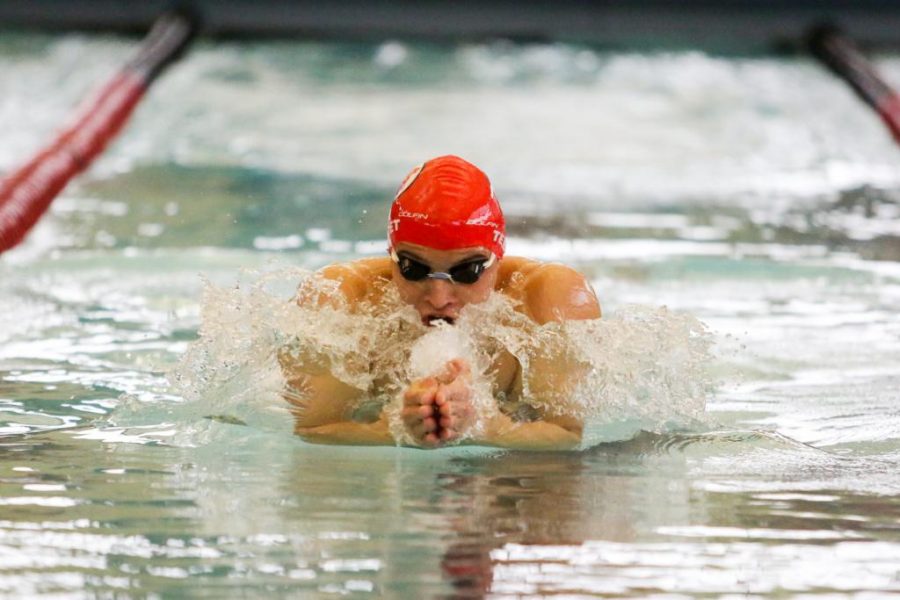The Art Adamson Invitational hosted by Texas A&M gets underway on Thursday, Nov. 16 and the University of Utah swim and dive teams will be one of the 11 programs there to compete. The Utes will race against teams from across the country, including two Pac-12 schools, No. 24 Arizona State and No. 1 Stanford.
Head coach Joe Dykstra is confident in his team’s preparation and potential to perform well at the invitational. In preparation for the meet, the Utes have been working tirelessly to fine tune every detail and improve their skills.
“We’re expecting season best times in everything across the board and a lot of lifetime best times,” Dykstra said. “We’ve been training really well. It’ll be the first time we get to put on race suits and go to sea level. It’s a really fast pool at A&M and a good level of competition.”
Heading into the three-day invitational, Dykstra expects some championship qualifying times from the men’s 200 medley relay as seniors Paul Ungur, Jack Burton, Ben Scott and freshman Rodolfo Moreira, who contributed to Utah’s win against UNLV nearly two weeks ago, will be in the mix. Utah will continue to look to junior Daniel McArthur as a key component, after he finished in first place against the Rebels in the 200 back.
As for the women’s side, they will race against other women’s teams like Arkansas, Arizona State, Boise State and Stanford. With both Stanford and Arizona State in attendance, the Utes are determined to have improved times against these two championship caliber teams.
Scott is looking forward to racing alongside his teammates again this weekend, and he believes racing at sea level will result in significant time drops for the Utes, making each race that more competitive.
“It’s very rewarding to see teammates put in the work at practice everyday, and to see that excitement and joy they get to have from their personal success,” Scott said. “I know that will ultimately help them with their own race, because it feels good to swim fast and it’s nice to see others swim fast as well.”
Not only can racing at sea level be a positive for the Utes, but the amount of rests in between races will be crucial in their performances. Their primary focus for a successful meet is to execute their race plan by taking one race at a time.
“What we do in the regular dual meet situation in where you’re racing four events in two hours is totally different when you race six or seven times over three days,” Dykstra said. “The level of preparation and attention to detail, the level of work and recovery you have to do in between races and days is what we got to be focused on.”
g.cefalu@dailyutahchronicle.com
@giannamc5!



Amanda MacKay • Nov 16, 2017 at 1:31 pm
Good job on your first article, Gi!